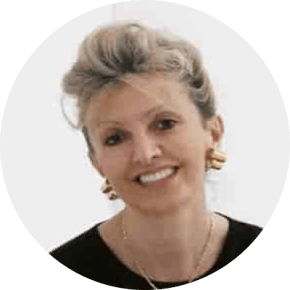Anxiety can be ‘acoustically modulated’ in neuro-intensive care patients: a high-impact interdisciplinary research pathway that starts at the intersection of art and science.
Medical scientific research, combined with computer and musical expertise, opens up new avenues for the treatment and rehabilitation of coma patients, demonstrating the potential of translational medicine to enhance everyday medical practice.
Music therapy for intensive care patients at the GHU (Groupe Hospitalier Universitaire [University Hospital Group]) hospital in Paris
Established in 2019 through the merger of three separate facilities, GHU is a centre of excellence for the treatment of mental illnesses and nervous system diseases. It boasts a 5,600-strong workforce, 600 of whom doctors, and a budget of 420 million euros. The hospital is home to an important initiative called lab-ah, a workshop for cultural innovation through design that collaborates with hospital users to make the facility more welcoming and improve hospitality. GHU — whose claim is "The hospital that takes care of your brain and emotions" — sponsors pioneering, interdisciplinary projects.
Sounds4Coma, a four-year project launched two years ago with total funding of over 400,000 euros from the French National Research Agency, is a prime example of this. The project brings together doctors and academic experts in acoustics, systems science, neurophysiology and critical care to propose a radically novel, ‘data-driven’ approach to using sound in the intensive care unit (ICU). Building on recent advances in systems science methods for neuroscience, the project is trialling new computational methods able to engineer sound stimuli that are optimised and personalised for coma diagnosis, while identifying novel neural scalp and intracranial EEG markers of “covert consciousness” in response to these sounds. Moreover, it is conducting preclinical studies to test the ability of novel sounds and markers to improve consciousness diagnosis in coma patients, in two newly-built ICU rooms designed especially for the project.
Coordinated by Jean-Julien AUCOUTURIER (FEMTO-ST INSTITUTE in Besançon, France), the project also involves the Institute of Psychiatry and Neurosciences of Paris (IPNP) and the DRCI (Délégation à la Recherche Clinique et à l'Innovation [Commission for Clinical Research and Innovation]) of GHU Paris - Psychiatry and Neurosciences.
Flashback
Aucouturier studied computer science and held several postdoctoral positions in cognitive neuroscience at the RIKEN Brain Science Institute in Tokyo, Japan, and the University of Burgundy in France. He was the Principal Investigator of the CREAM neuroscience laboratory of IRCAM (Institut de Recherche et Coordination Acoustique/Musique [Institute of Music and Sound]) from 2012 to 2020. The research team involved in CREAM used audio signal processing technologies to work out how the voice and music create emotions.
With a European grant (an ERC starting grant of 1.5 million euros), the centre worked on ‘cracking’ the emotional code of music from 2014 to 2019, seeking to provide, for the first time, a precise characterisation of what type of music signal is able to activate one emotion or another.
By combining the creative use of new technologies with a well-concerted mix of methods from experimental psychology and cognitive neuroscience (including psychoacoustics, fNIRS brain imaging, EEG/ERP paradigms, intercultural studies, and infant studies), CREAM produced the first functional description of the neural and cognitive processes involved in the induction of emotions by music, thus establishing new avenues for interdisciplinary research between life sciences and information science.
The breakthroughs achieved by the project unlocked the therapeutic potential of musical emotions. Music is understood as a cognitive technology, with algorithms that can ‘engineer’ it to mobilise one neural pathway or another, non-intrusively and non-pharmacologically. In this way, the team was able to conduct a series of high-impact clinical studies, putting their findings into practice immediately, including for the linguistic rehabilitation of aphasic stroke victims.
When culture heals
The Sounds4Coma, project was drafted in collaboration between Aucouturier’s research team and that of Prof. Tarek Sharshar of GHU, which enabled sponsorship of the artistic residency Sounds for Coma and the creation of immersive intensive care rooms in the new hospital, with the involvement of Mezzo Forte, in charge of the concept and coordination of the technical project for the acoustics and psychoacoustics aspects.
Two aspects were of particular interest in this study:
- The fine-tuning of psychoacoustics for clinical research purposes: using sound as a tool to probe brain and cognitive functions in altered states of consciousness.
- Using music for therapy, to relieve critical stress (e.g. coma and end of life). Against this backdrop, the contribution of Musi-Co was key, in terms of using generative artificial intelligence and cross-domain ontologies, as well as designing 3D audio systems.
The trial, which is ongoing in Paris, bears witness to how medical scientific research, combined with techniques and expert know-how in the computer science and music fields, is now allowing us to place reasonable hope in the chance of repairing the frayed thread of consciousness through listening, resonance (in the sense of Hartmut Rosa) and the possibility of hearing again and connecting with emotions that are fundamental to experience and subjectivity. This is good news for health and for the industry, as well as for creative and cultural sectors across Europe
By Catterina Seia e Giancarlo Sciascia (Cultural Manager & Foresight Specialist)




